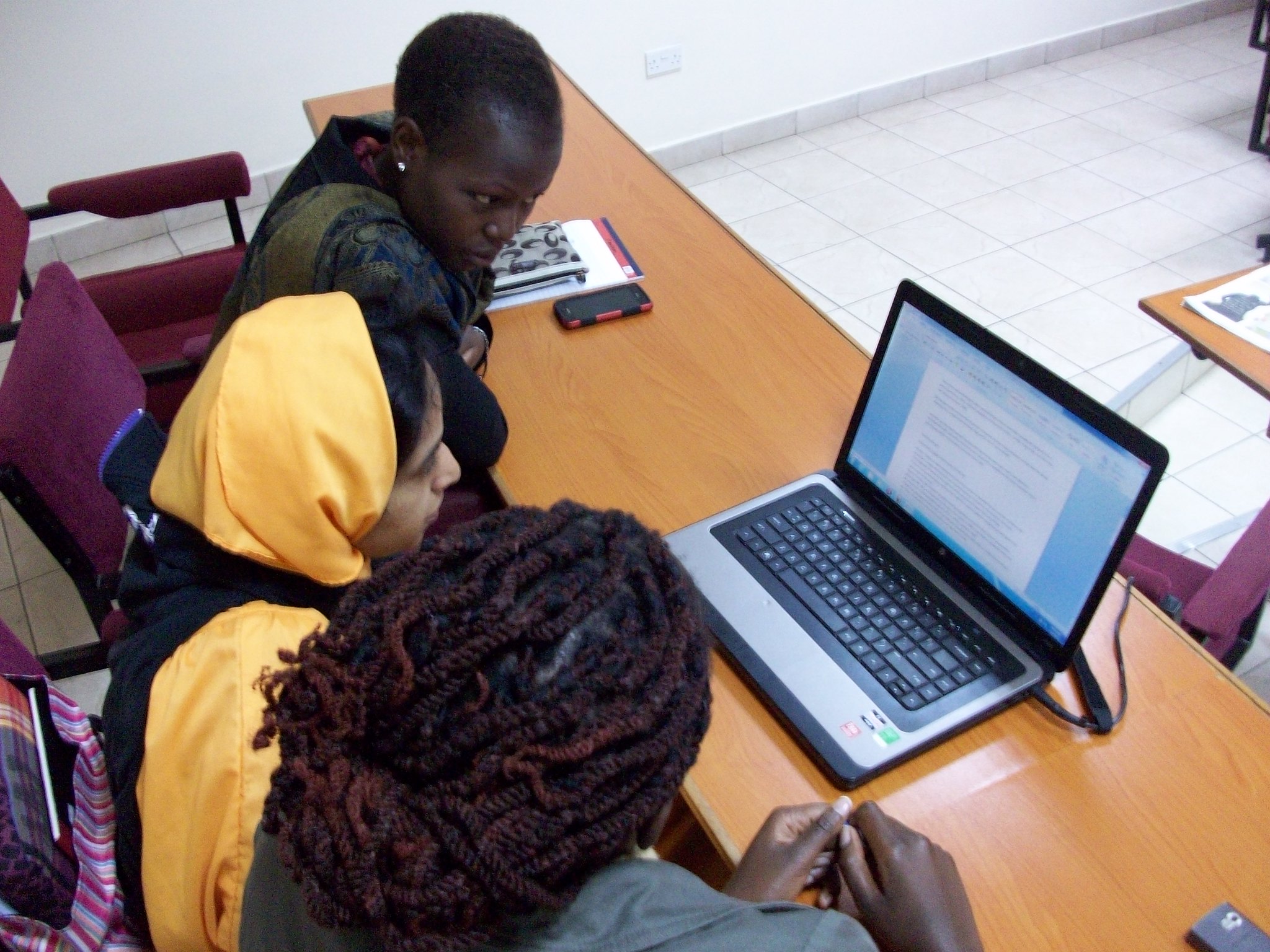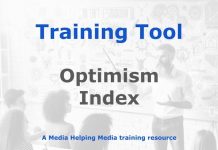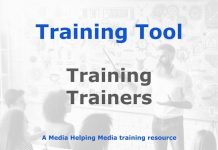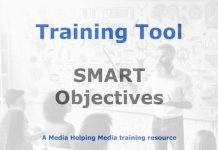
Media trainers must have recent, valid experience of all they teach. They will not earn the respect of course participants if they can’t relate to the issues they face.
Trainers need to understand the pressures those they are training live under, and they must be continually on the lookout for new solutions and methods that empower those they are trying to help.
In the module, ‘Maximising the impact of media training’, we looked at the importance of the research part of the media training process. This is the discovery period where the real training needs of the company are unearthed in terms of staffing, management and workflows.
In the second article, ‘Designing a successful media training plan’, we looked at the importance of spending enough time analysing that research in order to design a training plan that addresses those needs. This article looks at what it takes to be a media trainer.
1: Validity
You must have recent, related and practical experience of having delivered in the workplace the solutions or methods that you are teaching in the training session.
There is absolutely no point in talking about systems, workflows, editorial disciplines and business models if you haven’t gone through the hoops yourself and figured out all the issues those you are training are likely to face. Theory is fine, to a point, but those on your course will want to know what happens next in real life. You will need to be able to deal with those questions with examples.
Media managers who invite you in don’t want an academic, they want someone who has experience related to their business, systems that will make that business (and its staff) more effective, and solutions that their staff can improve and implement.
2: Currency
As well as having the validity of experience, you must also have a currency level based on how successful that experience was. Experience is great, but, if it is bad experience resulting in poor results then it is worse than worthless, unless, of course, you bounced back and can show the impact of that recovery on your work and the business.
You need to establish a level of respect earned through having created and delivered solutions in the real media business environment and at the highest level.
The media managers who are hiring you to do the training will want to see a return on investment (ROI) and that has to be backed up with examples of where your solutions and training have saved costs and created new revenue-generating products. If you don’t have these you are lacking in currency.
3: Imagination
A good trainer needs to be able to develop solutions on the fly, preferably based on recent experience, but also based on adapting what they know in order to meet current needs.
This ability to build on what works and revise what doesn’t work will ensure that the sessions have a freshness about them and remain relevant.
A trainer needs to be watching the body language of participants and the verbal clues they are giving out at all times. Are people falling asleep, are they doodling, texting or talking to a friend? Be alert to the signs and be prepared to call an unscheduled break.
While they are away rearrange your material. Look for something new to inject into the session. Try to relate it to what has just happened and what will happen next. If possible insert an exercise (an icebreaker works great here).
If there is a gap in understanding between you and the participants you will need to find ways to bridge that. If questions are raised that you have not addressed in your presentations, you need to think on your feet and answer them.
Often finding an answer to the questions they want to ask is more important than pushing ahead with what you were going to tell them. Dig deep into past experience for something that is relevant, but only speak from experience.
If you are working with complex concepts you may need to find images and phrases that simplify issues. You can search the web for amusing images during the breaks and project them to lighten the event. Always be prepared to rip up the script and start again if the session is beginning to feel like wading through mud.
4: Innovation
It is essential that a trainer continually reworks their material. It is not acceptable to simply take some old training off the shelf, dust it down and deliver it to a new group in a different country in different circumstances.
The trainer must also be able to invent new ways of working, new systems , new business-related theory (based on tried, tested and proven case-studies) and to streamline their knowledge at all times.
Don’t worry if you come up with concept that participants then search for online and come back to you saying that they can’t find any supporting material. That is a good point, not a negative. It means you are breaking the mould and offering something new to the world.
Those who criticise this approach like to bury their head in text books and worn and battered (although often valuable) theories. They like references and sources to all material. It’s a kind of security blanket.
If you are confident in your solutions and can prove they work you don’t need to worry about this. The best trainers are their own sources.
5: Ability to relate
The trainer must be able to relate all their previous experiences to the needs of the media business whose staff they are training. All skills offered need to be transferable both culturally and locally.
It’s also important to continually inject the latest media trends and best practice into all you offer.
This will involve checking out the most recent articles online, keeping up with media industry news, analysing trends, interpreting statistics and looking at case studies, not just before the training event, but during it.
There is nothing better than to start a morning session with an unscheduled presentation examining new information that has a bearing on the training you are offering.
6: Understanding
It’s important that a trainer understands the pressures that those they are training are experiencing in their day-to-day journalistic life. More on this in the ‘Researching a media training project’ module.
By spending enough time with staff in the research phase the trainer should be able to sense where the problems may be and to empathise with participants about the pressures they are facing.
In doing so, they should be able to tailor their solutions to those circumstances. This will often involve a sympathetic approach, which involves listening, sensing, absorbing and relating.
Check our article ‘How media assistance could improve.’ There was one example where a Western trainer complained that some participants arrived late and left early. Instead of taking the trouble to find out why, he raised the issue publicly in the session. This humiliated the individuals and caused the rest of the group to rally round them. The trainer had lost the group with one comment.
The reason for the poor timekeeping, he discovered later, was that journalists in the country involved didn’t earn a living wage through their journalism and many, including three on his course, had morning and evening jobs in order to feed their families. An understanding of the local issues would have helped that trainer to deliver better training.
7: Delivery skills
The trainer has a responsibility for sharing learning in a way that brings the best out in those being trained and ensures they are stimulated, inspired and motivated. It sounds obvious, but reading training feedback forms throws up some interesting issues.
“Trainer must not think they know best” “Trainer must not talk down to participants” “Trainer must not humiliate or shout at participants”
Clearly, there are some who offer training who are aloof, out-of-touch, unable to connect with the participants, and not fully engaged with the group. That is a recipe for disaster.
Make it clear from the start that you are their friend and colleague and that you are together to share and grow. It’s a two-way process; any trainer who thinks differently will never connect.
8: Audience awareness
It is essential you understand the culture of a region if you are invited to travel and offer training. Here are a few:
- Benchmarks: Many want benchmarks. These are examples they can examine, both successful and unsuccessful, so they can measure themselves against them, assess the implications and copy and improve.
- Signposts: Some want signposts that they can use to avoid going down the wrong route and with clear directions as to the route they should take
- Frameworks: And some want frameworks so that they can work out their own solutions around some firm concepts.
If you offer benchmarks in a country where they are seeking signposts or frameworks you will fail.








